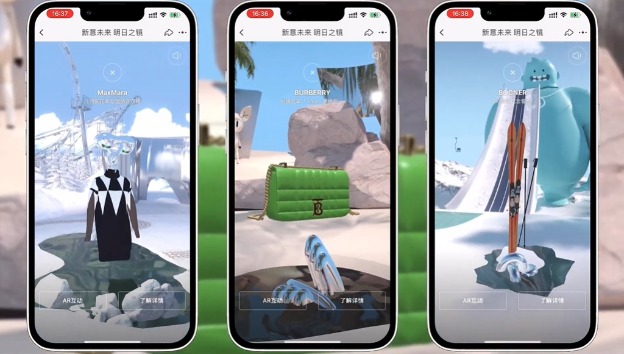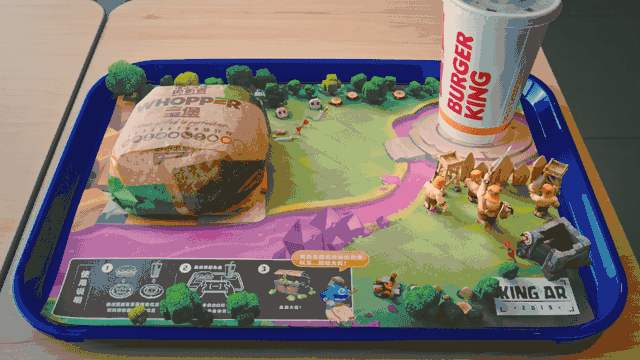What is a virtual store?
The introduction of virtual retail stores is taking the e-commerce market to new heights by integrating virtual reality technologies. A virtual store lets visitors enter into a virtual space that is a digital replica of its physical retail shop. Buyers can explore and buy a variety of products in an interactive and realistic environment. This has revolutionized the e-commerce market by garnering high engagement and improving the conversion rates of brands.
How does a virtual store work?
A virtual store provides the users with a digitally created space to move around and interact with virtual objects using their smartphones or VR tools like VR glasses or headsets. It uses various innovative technologies, including:
Virtual reality: Virtual reality allows users to immerse themselves in a fully interactive virtual environment. Using VR, customers can navigate through virtual stores to engage with products and explore store layouts as if they are physically visiting the store. This immersive engagement enhances the shopping experience and lets users virtually analyze and try on the products in a realistic manner.
3D modelling: 3D modelling is used to create hyperrealistic three-dimensional models of products that users can visualize in virtual stores. Customers can interact with these models, analyze and rotate them in any direction to check their features in detail. This gives them a lifelike preview of the products so they can make a better purchase decision.
Computer vision: Computer vision technology is helpful in detecting and identifying customer movements in a virtual store. When customers point towards a product, this technology quickly recognizes the movement and offers customized results.
User interface: Virtual stores use a user-friendly interface to help users explore, search, and buy their favorite products quickly and easily.
Features of virtual stores
Virtual try-on
Virtual try-on stores use AR features so that users can virtually try on products before buying them. This is mostly used in the fashion industry where users try on clothes, jewelry items, makeup products, and other accessories to check their appearance in real life. Kivisense can help you launch your online virtual store and provide innovative try-on solutions to your customers.

For example, Chopard launched an immersive AR campaign called, “Snow Mountain Soars, Classics Reborn” to showcase their luxury watch collection in an online exhibition. This lets users analyze and virtually try on their favorite watches through a detailed 1:1 digital showcase. Advanced 3D rendering technology lets users explore the brand’s creativity and heritage through interactive panoramic tours. Moreover, innovative wrist technology gives users a realistic view of how the watch will appear on their wrists in real life.
Virtual Product try-out
Virtual try-out stores are different from virtual try-on stores in that these let users view a product by virtually placing it in their real-world settings. These types of virtual stores are mostly used in the furniture market where users can virtually place any furniture item to check how it will fit and appear in their surroundings.
3D Webstores
These types of virtual stores are actually the three-dimensional versions of their physical outlet. They contain 3D models of all the products available in original retail stores. Users can easily move around and look for their favorite using digital signs such as arrows. This makes their online shopping experience more immersive and exciting.
Virtual showrooms
Virtual showrooms use virtual reality tools like virtual headsets or glasses to let users enter a virtual world. Inside this virtual space, users can go around and explore different areas to search and buy their desired products. This provides them with the ease of in-store shopping from the comfort of their homes.
For example, VOGUE collaborated with Tmall Luxury to host a unique digital fashion week. In this immersive campaign, users can enjoy a virtual runway show using their smartphones. They can explore the latest autumn/winter collections and interact with brand avatars in a virtual showroom using AR and VR technologies. The campaign featured many luxury fashion brands including BOGNER, Max Mara, and Burberry. This innovative blend of technology and fashion experiences helped the brand maximize its engagement and boost its sales effectively.
How virtual store can transform a business?
Enhance engagement
Virtual stores allow customers to try on and visualize products in real-world scenarios using AR tools. Users can interact with the three-dimensional models of products and examine their features in detail. This interactive shopping experience enhances brand engagement and boosts sales.
More foot traffic
A virtual store is accessible from anywhere at any time, removing all physical barriers. Your online customers become your brand ambassadors and promote your products to others, drawing more foot traffic to your retail store and expanding your brand reach.
Add human touch
Many virtual stores offer AI-based shopping assistants to add a human touch to customer’s virtual shopping experience. Users feel connected with the brand and trust its products and services. This increases their confidence in their purchases and keeps them coming back.
Less return rates
Virtual stores allow customers to try on their products virtually before making a purchase. This lets customers see how the product will appear in real life and increases their confidence in the purchase. This promotes customer satisfaction, which in turn leads to fewer product returns and better conversion rates.
Personalized shopping experience
Virtual stores use AI tools to make your online shopping experience more personalized. AI-based shopping assistants can analyze customer behavior and preferences to provide customized product suggestions. This makes customers feel special and creates an emotional connection with the brand.
Best Virtual stores examples around the world
YSL Beauty
The YSL Beauty Zone VR Pop-Up in 2023 used virtual reality to provide an immersive exploration of beauty products. It combined offline retail with VR immersion to transform beauty engagement.
The interactive campaign employed Oculus VR headsets. These headsets use VR technology to transport users to a 360-degree beauty zone. Participants were given a controller to actively explore three pillar products. The immersive experience enhanced customer interaction with YSL products.
Gucci
Gucci has released an app on Apple Vision Pro that uses virtual reality to provide immersive fashion experiences. The app allows users to enter a virtual world and try on Gucci products virtually. Users can engage with interactive content, including watching fashion shows and playing arcade games designed specifically for the high-quality visuals of the Apple Vision Pro.

Source: XR Goes Pop
Canada goose
Canada Goose launched its virtual store in China, offering its customers an immersive shopping experience. It presented its latest winter collection through interactive displays. The virtual store uses AR technology and 3D scanning to provide a 360-degree view of the clothes, to analyze their color, size, and other features in detail. The use of virtual reality to display their latest collections helped them to garner more engagement and boosted their sales.
Dior beauty
Dior created a virtual store, Atelier of Dreams, which offered customers many interesting and creative virtual experiences. The virtual store took the visitors to a fantasy world that featured a Dior beauty signature tree, a unique Dior garden, a beautiful night sky, and blooming flowers. The environment was full of amazing visuals that let customers explore their products in a thrilling way. This interactive campaign helped the brand to get 91% new visitors and enhanced its engagement.

Burberry
Burberry used virtual reality to improve its e-commerce marketing by introducing an interactive virtual reality store in 2021. The brand created a virtual replica of its Tokyo flagship store by integrating touch points throughout the store. These touch points let customers access the styling tip films and explore their favorite products. This immersive environment made their shopping experience more engaging and improved the brand’s sales.

Source: Linkedin, Burberry
Future trends of virtual stores: Taking Virtual reality to new heights
The E-commerce sector is adopting virtual reality technology more than ever. Advancements in the metaverse will lead to the development of virtual offices, museums, and exhibition halls. Soon, there will be virtual food stores like Walmart VR stores, live video consultations like the Gucci virtual shopping experience, and the ability to shop virtually with family and friends. These developments will revolutionize the e-commerce market and provide more engaging ways for brands to interact with their customers.
Conclusion
Virtual stores combine traditional online shopping experiences with virtual reality elements. It helps brands build a strong connection with buyers by increasing customer engagement and loyalty. If you want to level up your e-commerce business and approach a wider audience, integrating virtual reality into business is a must. Kivisense offers industry-leading augmented and virtual reality solutions to launch your virtual stores. This will help you outperform your competitors and keep your customers coming back.






